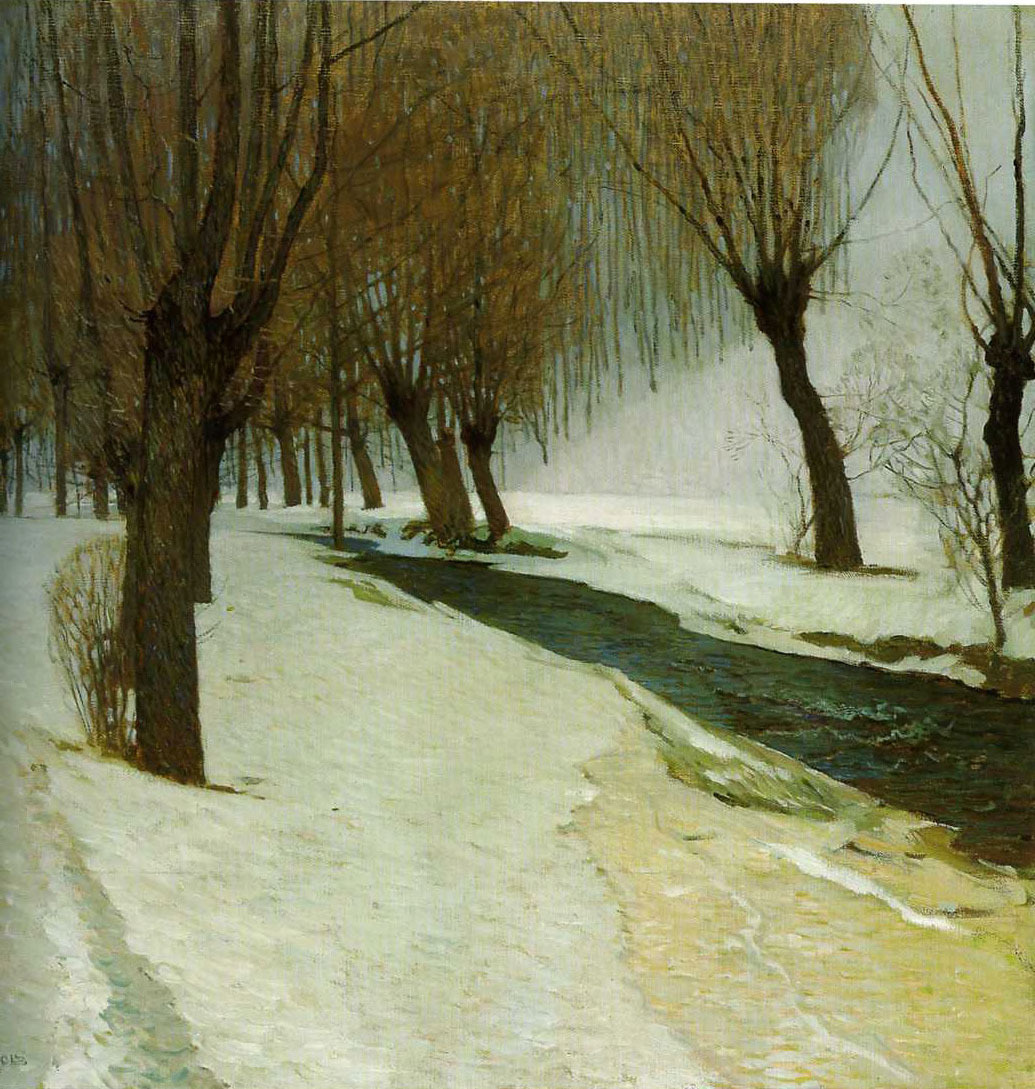Carl Moll
Carl Moll ( born April 23 1861 in Vienna, † April 13, 1945 ) was an Austrian painter of Art Nouveau.
Genealogy
Carl Moll comes from wholesalers, brands and member of the Vienna City Council Julius Moll ( * 1829, † 1877) and Rosina Schmid ( * 1835) from.
His paternal grandparents were Ignaz minor ( * 1776, † 1846) from Linz, owner of the pharmacy "At the White Stork" in Vienna and Eleonora Koller ( * 1796, † 1834). His maternal grandparent were Anton Schmid ( * 1806, † 1857), a master baker in Wieden, and Rosina Fischer ( * 1814, † 1847). ( † 1871 * 1837), a landscape painter in Vienna who influenced him early on and aroused the interest in painting from the maternal line his uncle Karl Schmid comes.
Carl Moll married in 1895 came from Hamburg, actress and singer Anna Bergen ( * 1857, † 1938). She was the widow of the late 1892 landscape painter Emil Jakob Schindler was his pupil and assistant Carl Moll. His wife brought two daughters into the marriage, one of which was the later famous Alma Mahler -Werfel. Carl Moll adopted the two daughters.
He had a biological daughter with Anna Maria ( * 1899 in Vienna, † April 13, 1945 in Vienna) and later wife of the District Court Vice President Dr. Richard Eberstaller ( born April 12, 1887 in Langenlois, † April 13, 1945 in Vienna).
Life
Moll studied at the Academy of Fine Arts in Vienna 1880/1881 by Christian Griepenkerl. He later became a student of Emil Jakob Schindler.
In 1897 he was one of the founders of the Vienna Secession. The Secessionists brought contemporary art exhibitions in Vienna. Built in 1901 by Josef Hoffmann for Moll and Koloman Moser on the Hohenwarte in the 19th district of Vienna, a large double house, the first of a planned residential colony for wealthy clients. Here minor lived with the address 19, Steinfeldgasse 8, then up to his death.
At the instigation of Moll in 1903 was the Modern Gallery, today Österreichische Galerie Belvedere.
1905 Carl Moll came out together with the group of Gustav Klimt from the Secession. He stepped down as director of the gallery Miethke on as a supporter of Klimt. He organized exhibitions of international artists and brought, among others, the first time works by Vincent van Gogh to Vienna.
In the 1930s, Moll became a convinced National Socialists. However, his stepdaughter Alma had to flee with her husband, the poet Franz Werfel, because of his Jewish descent in 1938 after the annexation of Austria by Nazi Germany. Just a few days later took five minor images that Alma the gallery had borrowed at the Belvedere, on behalf of his daughter Maria Eberstaller from. The most valuable of the images, Edvard Munch Summer Night on the beach, selling minor later back to the gallery.
When the Red Army early April 1945 won the battle of Vienna, Moll wrote a farewell letter dated April 10 with the sentence I sleep unrepentant one, I've had all that is beautiful, it has to offer a life. Two days later he committed suicide along with his daughter and her husband in his villa suicide. He was buried in the cemetery Grinzinger.
Importance
Moll is best known for his large-format color lithographs and woodcuts. The style of his later landscapes transformed increasingly by the dimensional painting of the Secessionists to more space, in the later years he approached more and more to the expressionism.
Record prices in the art market
On June 21, 2013, oil paintings by the artist was auctioned online for 297,000 euros ( 395,000 U.S. dollars) Auctionata. It is to the world's highest ever achieved for an image of this painter auction price.
Collections
- Collection Jeno Eisenberger, Vienna
- Leopold Museum, Vienna
- Muzeul Ţării Crişurilor, Oradea
- State Museum of Lower Austria, St. Pölten
- Österreichische Galerie Belvedere, Vienna



_Bildnis_Carl_Moll.jpg)






